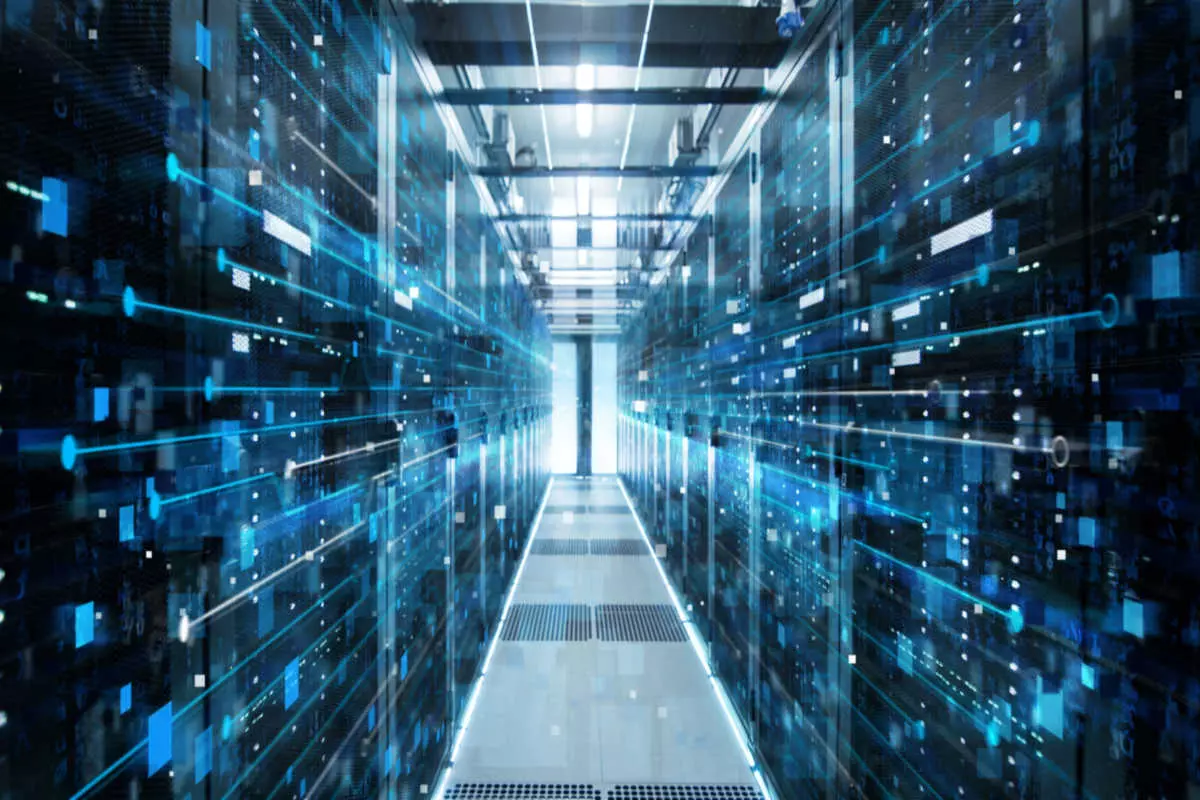A Guide to Artificial Intelligence Infrastructure
Companies are increasingly adopting artificial intelligence, as it helps them reduce human error, cut repetitive tasks, and predict demand. And for most of them, it has become an integral part of their operations. But what does the process of integrating AI technology look like?
In order to implement AI and machine learning tools, companies need to develop a solid and practical artificial intelligence infrastructure. Only after building a robust AI infrastructure can you reap the benefits of AI and ML models.
Read on to learn more about artificial intelligence infrastructure and what it involves.
What Is Artificial Intelligence Infrastructure?
Artificial intelligence infrastructure combines artificial intelligence and machine learning solutions to develop and deploy reliable and scalable data solutions. It provides a foundation for AI and ML models to do their job. For example, think of how a country needs road infrastructure to allow its people to travel by car.

AI infrastructure is involved in each stage of a machine learning workflow, starting from data preparation to model deployment. With a functioning AI infrastructure, software engineers and DevOps teams can analyze and greenlight the data for the following stages. Then, at the end of the workflow, organizations can deploy the models and make strategic decisions based on their output.
Why AI Infrastructure Matters
There are many reasons why infrastructure matters much more than you think. With a proper AI infrastructure, data scientists can:
- Get access to a large amount of data
- Sort, clear, and refine a large amount of data
- Test and train machine learning algorithms
- Deploy AI and machine learning algorithms
- Manage the hardware’s computing resources
As you can see, all crucial steps of the entire machine learning lifecycle rely heavily on a viable artificial intelligence infrastructure. So it’s not a question of whether to build an AI infrastructure but about when and, more importantly, how to build it.
AI Infrastructure Components
No matter the type of organization, the core elements of AI infrastructure are the same. Below we list the underlying components every artificial intelligence infrastructure should incorporate.
Big Data Storage
Machine learning and artificial intelligence models have to work with an enormous amount of data. Therefore, storage should be a top priority when building an AI framework. Companies need to make sure to install mechanisms that have ample storage capacity and rapid scanning of data. We’re talking about hardware that can support petabytes (1,024 terabytes) and exabytes (1,024 petabytes) of data.
The more your company grows, the more storage you’ll need for data. You should also consider the sources of your data and where it resides in order to acquire the appropriate storage capacity. For instance, will you analyze or process data in real-time or later? For temporary storage of datasets, a solid-state drive (SSD) will usually be enough. However, a hard disk drive (HDD) will be more suitable for data that will permanently be stored on your hard drive. The rule of thumb is to buy at least twice as much memory as you plan to store.
Data Scrubbing, Management, and Governance
Not only do organizations need to choose where to store data but also how to clean it. When you deal with a large chunk of data, there are usually a lot of incorrect or missing values that need to be eliminated before moving forward. You can obtain data cleaning tools such as OpenRefine, Trifacta Wrangler, and WinPure.
Data management and governance include ensuring that the data is readily available and accessible for all users in varying departments. The data also needs to be encrypted and secured through various protocols, which will have to be established by your organization.
Networking
Organizations need to upgrade their networks and install high-performance connections to provide productive output through AI. Advanced AI methods are highly dependent on strong and consistent communication. That’s why installing high-bandwidth and low-latency networks should be a top priority for building a rigid AI infrastructure.
A fast and intelligent enterprise network is needed to transfer information between different systems and departments within your organization. It also helps identify and prevent threats such as data breaches and leaks.
Artificial Intelligence Workloads
A good artificial intelligence infrastructure isn’t complete without a powerful central processing unit (CPU) and graphics processing unit (GPU). Both of these are components that provide processing capabilities in AI.
A CPU can perform a variety of tasks quickly, including inputting, storing, and outputting data. However, for deep learning processes, a CPU should be combined with a GPU, a more powerful processor, to deliver better results. A CPU combined with a GPU can render high-quality images and videos and deploy more complex algorithms.
Today, you can obtain different kinds of CPUs and GPUs explicitly designed to support AI tasks. In addition, companies like Nvidia and EVGA produce GPUs for deep learning that might be useful for building your artificial intelligence infrastructure.
Artificial Intelligence of Things
Artificial Intelligence of Things (AIoT) is a mix of AI and the Internet of Things (IoT). The Internet of Things is a growing industry that focuses on connecting objects like cars, refrigerators, and thermostats to transfer data. AIoT aims to create more efficient interactions between humans and machines and augment data management and analytics.
The amount of transferable data can reach new heights with the collaboration of AI and the Internet of Things. However, implementing AIoT usually requires even more sustainable network connections and large data storage capacities, so you need to check whether your current technology can support it. An AIoT ecosystem includes several processors, sensors, antennas, and communication hardware that can collect and transfer data, as well as networking frameworks and standards such as IPv6, ZigBee, and LiteOS.
AI Training and Skills Development
Finally, even though AI aims to automate processes as much as possible, you will still need a human touch to oversee everything. Teams of data scientists, software engineers, cybersecurity experts, and other IT professionals are required to develop and deploy the models and maintain the artificial intelligence infrastructure.
This team of professionals should also work closely with company executives to ensure that the infrastructure is aligned with the organization’s goals.
The Future of Artificial Intelligence Infrastructure
Thanks to the power of AI, insurance companies can better assess risks, manufacturers can prevent bottlenecks, and doctors can prescribe the right doses to patients. These are just a few of today’s AI use cases. However, technology is constantly evolving, and so is the infrastructure supporting them.
In the coming years, we expect to see further progress in computational hardware that can support even more advanced functions and massive amounts of data. Additionally, major developments in other components of artificial intelligence infrastructure are also on the way. With that said, these are how some infrastructure elements will develop:
- Data warehouses, lakehouses, and other data platforms will capture more volumes and varieties of data.
- More advanced solutions will evaluate the quality of raw data and prepare it into labeled data.
- ML engineers will have easier access to process Big Data in less time, and DevOps can take advantage of AI to identify problems in the workstream earlier and eliminate them.
- More businesses will adopt deep learning. Medical image analysis in healthcare and predictive machine maintenance in manufacturing will become more common thanks to the continuous investment in data science.
- Organizations will transition from an interdependent platform to a modular artificial intelligence infrastructure, where they can customize the components of the ML lifecycle to fit their specific needs.
Try our real-time predictive modeling engine and create your first custom model in five minutes – no coding necessary!
- Fully operational AI with automated model building and deployment
- Data preprocessing and analysis tools
- Custom modeling solutions
- Actionable analytics
- A personalized approach to real-time decision making
Table of Contents
- What Is Artificial Intelligence Infrastructure?
- Why AI Infrastructure Matters
- AI Infrastructure Components
- Big Data Storage
- Data Scrubbing, Management, and Governance
- Networking
- Artificial Intelligence Workloads
- Artificial Intelligence of Things
- AI Training and Skills Development
- The Future of Artificial Intelligence Infrastructure



